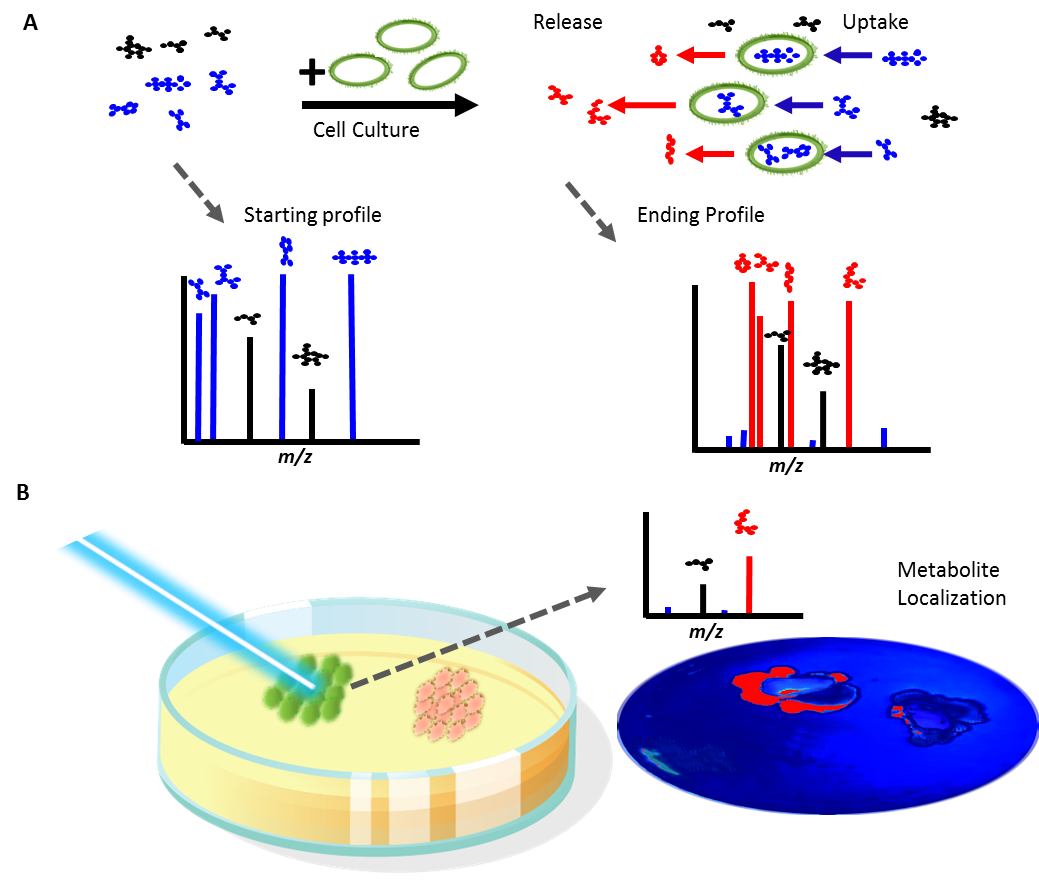Northen Lab researchers Sarah McLaughlin, Kateryna Zhalnina, Suzanne Kosina, Trent Northen, and Joelle Sasse, co-authored a paper recently accepted in Nature Communications, titled “The core metabolome and root exudation dynamics of three phylogenetically distinct plant species.” This research aimed to further understand the dynamics of root exudation and its influence on microbiome structure. Our lab focused on assessing exudate sampling methods and plant growth conditions, and comparing the metabolic profiles of three different plant species along with investigating diurnal influences on exudation.
Using LC-MS/MS based metabolomics analysis, we compared three phylogenetically distinct plant species, Arabidopsis thaliana, Brachypodium distachyon, and Medicago truncatula and established the concept of “root and exudate core metabolomes.” While there were significant differences between the species for some metabolites, two thirds of the metabolites were detected in the roots and exudates of all three plant species, suggesting, for the first time, the presence of a root and exudate core metabolome. Additionally, there were several key findings revealing the effects of collection time period, growth medium, and diurnal cycle on metabolite exudation profiles.

To learn more, read the full article here.
McLaughlin, S.; Zhalnina, K.; Kosina, S.; Northen, T. R.; Sasse, J. The core metabolome and root exudation dynamics of three phylogenetically distinct plant species. Nature Communications 2023, 14 (1). https://doi.org/10.1038/s41467-023-37164-x




